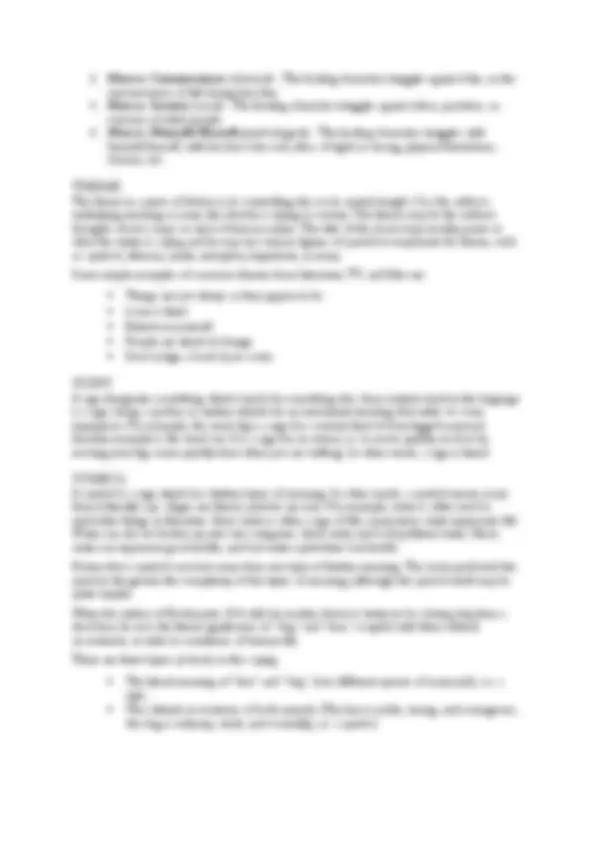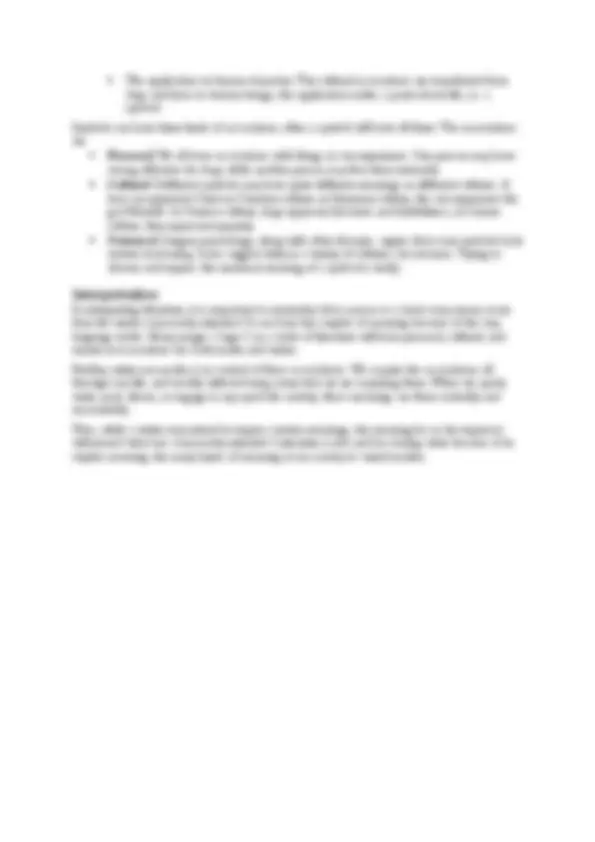




Study with the several resources on Docsity

Earn points by helping other students or get them with a premium plan


Prepare for your exams
Study with the several resources on Docsity

Earn points to download
Earn points by helping other students or get them with a premium plan
Community
Ask the community for help and clear up your study doubts
Discover the best universities in your country according to Docsity users
Free resources
Download our free guides on studying techniques, anxiety management strategies, and thesis advice from Docsity tutors
Art appreciation: Elements of short story
Typology: Cheat Sheet
1 / 4

This page cannot be seen from the preview
Don't miss anything!



The plot is how the author arranges events to develop his basic idea; It is the sequence of events in a story or play. The plot is a planned, logical series of events having a beginning, middle, and end. The short story usually has one plot so it can be read in one sitting. There are five essential parts of plot:
Point of view, or p.o.v., is defined as the angle from which the story is told.
There are two meanings for the word character:
Characters are...
Individual - round, many sided and complex personalities. Developing - dynamic, many sided personalities that change, for better or worse, by the end of the story. Static - Stereotype, have one or two characteristics that never change and are emphasized e.g. brilliant detective, drunk, scrooge, cruel stepmother, etc.
The time and location in which a story takes place is called the setting. For some stories the setting is very important, while for others it is not. There are several aspects of a story's setting to consider when examining how setting contributes to a story (some, or all, may be present in a story):
Conflict is essential to plot. Without conflict there is no plot. It is the opposition of forces which ties one incident to another and makes the plot move. Conflict is not merely limited to open arguments, rather it is any form of opposition that faces the main character. Within a short story there may be only one central struggle, or there may be one dominant struggle with many minor ones.
There are two types of conflict:
T here are four kinds of conflict:
The application to human character: The cultural associations are transferred from dogs and lions to human beings; the application makes a point about life, i.e. a symbol.
Symbols can have three kinds of association; often a symbol will have all three. The associations are Personal : We all have associations with things in our experience. One person may have strong affection for dogs while another person may fear them intensely. Cultural : Different symbols may have quite different meanings in different cultures. A lion can represent Christ in Christian culture; in Sumerian culture, the sun represents the god Marduk. In Chinese culture, dogs represent devotion and faithfulness; in Islamic culture, they represent impurity. Universal : Jungian psychology, along with other theories, argues that some symbols have universal meaning. Lions suggest deity in a variety of cultures, for instance. Trying to discern and express the universal meaning of a symbol is tricky.
In interpreting literature, it is important to remember that a poem or a short story means more than the writer consciously intended. It can have this surplus of meaning because of the way language works. Many images ("signs") in a work of literature will have personal, cultural, and universal associations for both reader and writer.
Neither writer nor reader is in control of these associations. We acquire the associations all through our life, and usually without being aware that we are acquiring them. When we speak, write, read, dream, or engage in any symbolic activity, these meanings are there naturally and unavoidably.
Thus, while a writer may intend to express certain meanings, the meaning he or she expresses will exceed what was consciously intended. Literature is rich and has lasting value because of its surplus meaning, the many layers of meaning it can convey to varied readers.